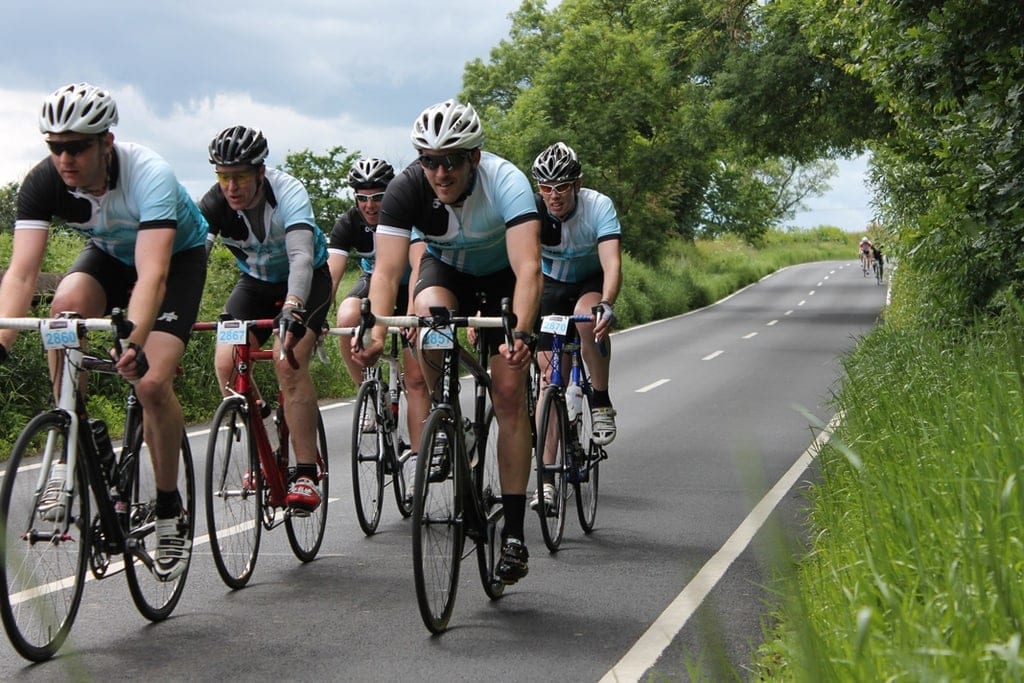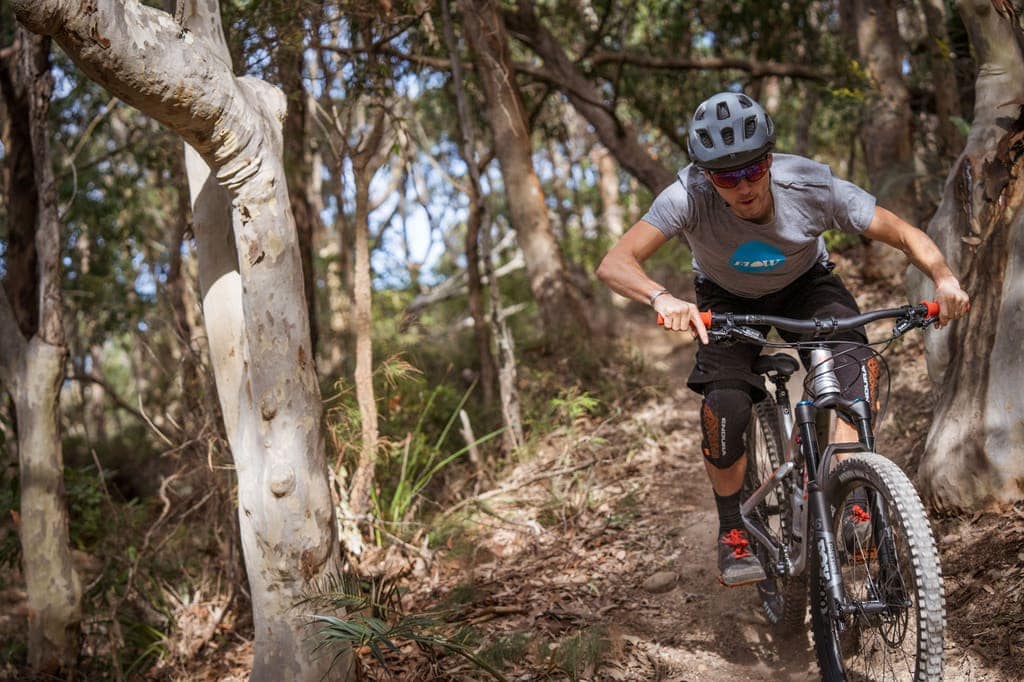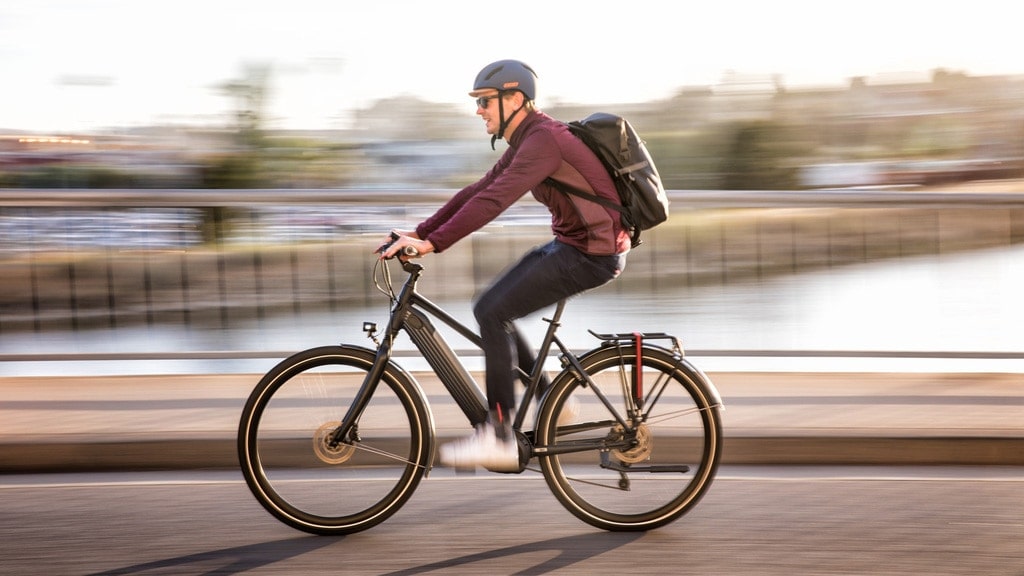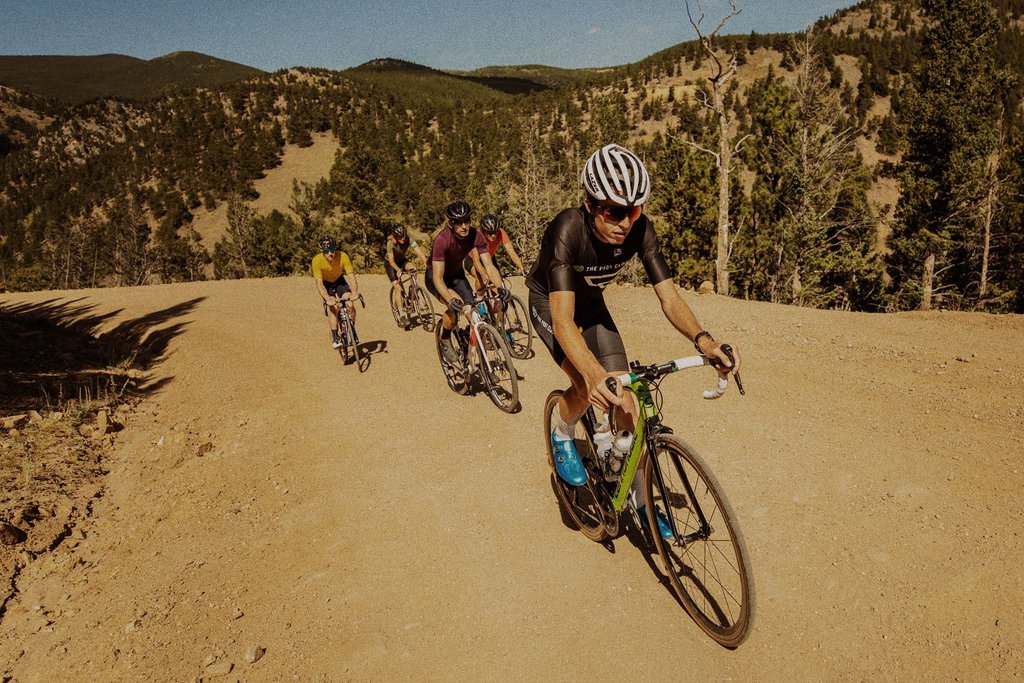8 Things to Know Before Buying Used Bikes
Looking to buy a used bike but have heard of horror stories of things not turning out as they’re supposed to be?
- How would you know that the seller is legit?
- Are you paying a fair price vs. the bike’s condition?
- What are the things to look out for?
I’ll cover all of these in detail on this page.
By the end, you should have a good basic knowledge of how to identify a bike that’s worth purchasing second-hand and how to make sure you get a reasonable price for it.
So if you’re looking for a used bike, or even just curious to know what to be aware of, read on to see where to find them and what to look for.
On This Page
Where to Look for Used Bikes?
For those of us who don’t regularly buy and sell used bikes, it’s useful to know some of the best sources that feature reliable sellers, good contact, and room for feedback and communication.
These are some of the most popular ways to find second-hand bikes, which means you’ll have a better chance of finding something that works for you.
eBay
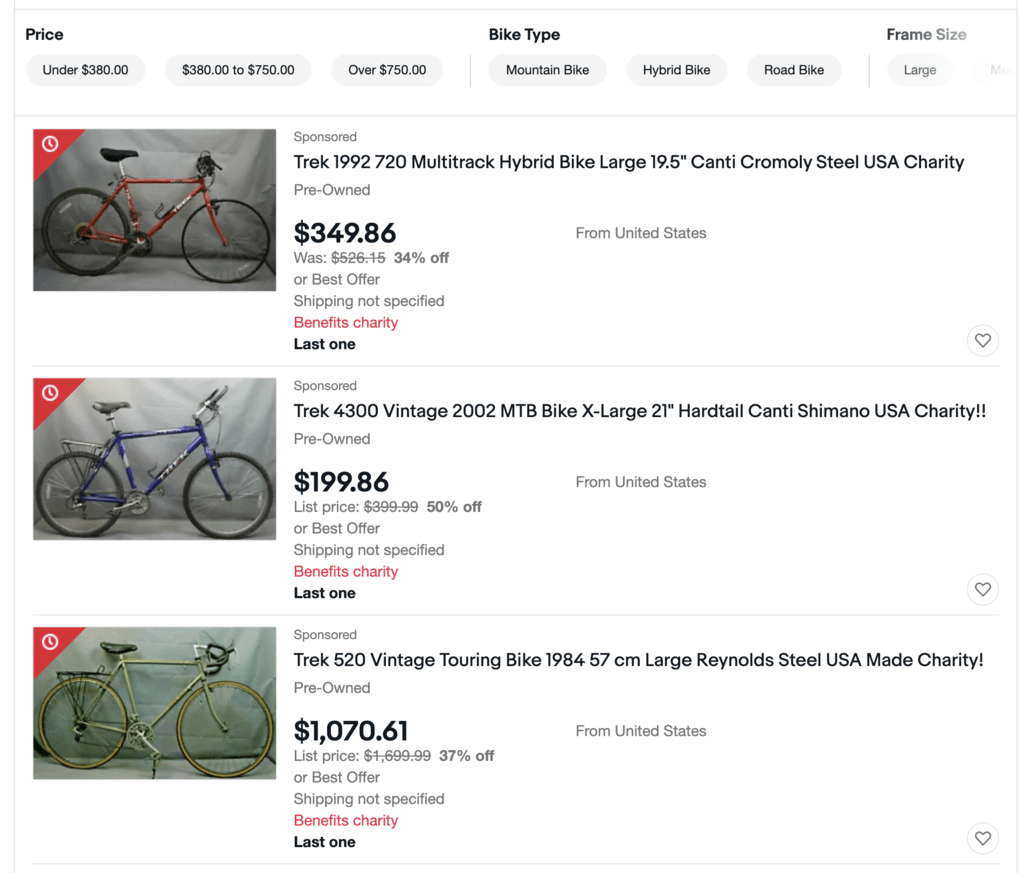
For over 20 years, eBay has been a favorite for used bike bargain hunters.
With both auctions and Buy It Now’features, as well as saved searches that alert you to new posts and consistent seller ratings and feedback, chances are there’s something here for everyone, and often at incredibly fair prices.
Craiglist

While Craigslist has often been joked about as a place for weird personals and dented cookware, it’s actually a terrific way to find second-hand bicycles due to its universality across the United States and its ease of use for local sellers.
Facebook Marketplace
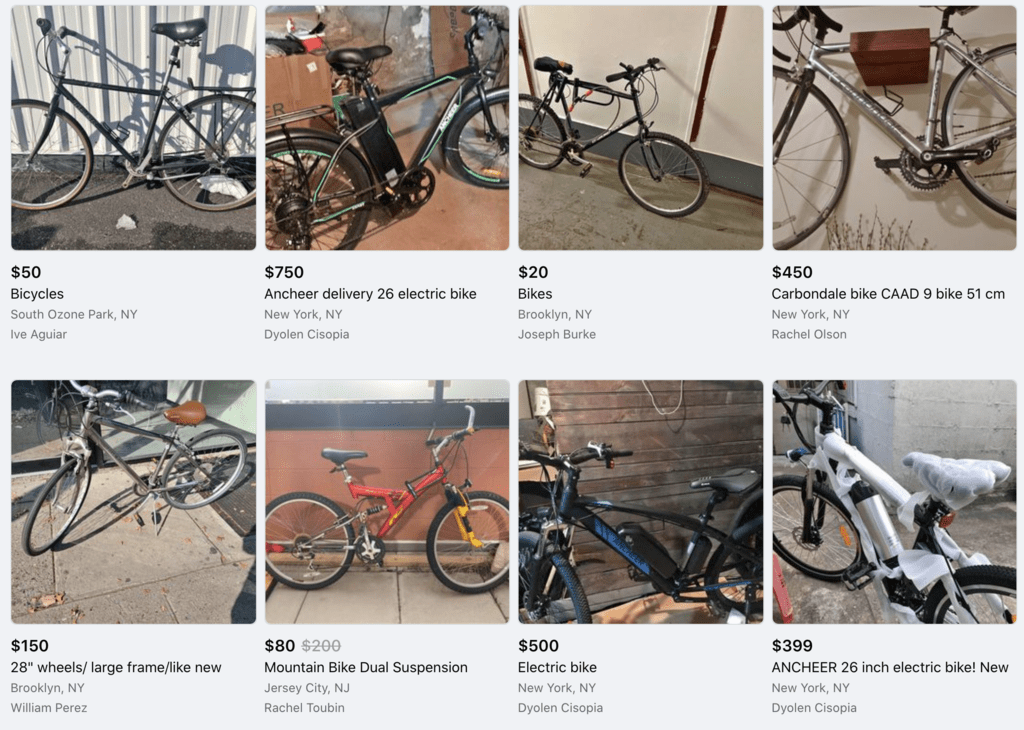
A resurrected version of Facebook’s 2007 Marketplace feature, this time it’s more prominently featured on both the desktop and mobile versions, allowing everyday users to comfortably and seamlessly post items for sale.
The Facebook Marketplace allows hopeful buyers to easily spot items and deals that might otherwise be missed on larger classified websites.
Facebook Buy & Sell Groups
These are what convinced Facebook to bring back the Marketplace.
Simple groups through which individuals can post used bikes and second-hand gear for sale, most are open to the public.
Compared to the Facebook Marketplace, these groups’ have a very targeted group audience. You can be sure of better chances of finding more choices and sellers who know their stuff.
Local Bike Shops and Used Bike Dealers
The traditional go-to for a reliable veteran bike. It’s always a good idea to check out your local bike shops first.
Chances are they’ll be open to negotiation, and even if you end up paying a little extra, you can enjoy the fact that you’re supporting a local business while also being sure that you can check out your prospective bike in person, with qualified advice to hand.
Cycling Friends
If you happen to have friends who are into cycling, whether competitively or just to get around town, it’s likely they’ll have one or two older bikes they’d be willing to part with.
Some can be so enthusiastic that they’ll eagerly purchase something newer and flashier just out of interest, so when that happens, be sure to ask nicely what their plans are for their old ride.
7 Things to Check Before Buying Used Bikes
Know Your Size

The importance of knowing the right size frame for you can’t be stressed enough.
Too big, and you’re teetering ludicrously off the ground while over-extending your legs to balance.
Too small, and you’ll end up with cramped knees and a pinch in your back.
To get around this, it’s a good idea to check yourself against a bike geometry sizing chart, which will show you how each part of your body can be measured against a frame and what size you should be using.
You can also ask the seller about their height and build and how their bike is currently set up, and whether they’ve had any complaints or issues.
Alternatively, you can ask your friends who are riding the same bike and have a similar height as you, if any.
Read More : 5 Things to Know Before Getting A Professional Bike Fit
Bike Frame Condition
The first thing to check on the bike itself is the condition of the frame, and for that, you’ll need to know what material it’s constructed from.
Apart from obvious signs of damage, there are a few key things to look for.
Missing or replaced front forks, for example, are a sign that the bike’s been in a front-end collision. For steel, alloys, or titanium, make sure that there aren’t too many, or, ideally, any dents, pits, dings, corrosion, or rust, as well as no obvious warping.
Geek Tip : For carbon frames, keep your eye on the paint.
If a carbon frame has been repainted, it might have been damaged and repaired before, so it’s a good idea to ask the seller directly if this is the case. If it has, then you can factor that into whether or not you want to take the risk and include it in the price.
If you start to fall in love with the bike despite your suspicions, it’s always good to just walk away, rather than purchase something that’s just going to be a drain on your finances.
In most cases, paint chips and scratches are perfectly normal, but it can’t hurt to be direct and ask for an honest history of the bike in question.
Read More : Titanium vs Carbon Bikes – Which One Suits You Better?
Drivetrain Condition
Getting the most out of your drivetrain on any bike depends on several things, namely how well it’s been maintained in the past and what the resulting wear and tear of that looks like.
With something that’s been exposed to the weather, under-maintained, or comes from areas with, say, mainly rough winters, there’s a good chance that you’re going to have to change the chain, cassette, or chainrings. In the worst case, you’ll need to change all three.
Geek Tip : If you’re looking the bike over in person (always a good idea), check to see that the gears are shifting correctly.
If they’re not, be sure it’s an issue you’re comfortable solving on your own with the minimal fuss, or be ready to factor in the cost of parts and labor for sending it to a bike shop when you’re negotiating the final price.
Read More : 7 Basic Bike Maintenance Tips for Every Cyclist
Brakes Condition
Just as you’ll need to give the drivetrain a thorough check, the brakes need careful attention, too.
In most cases, only the brake pads are worn. Luckily, brake pads themselves are cheaper and easier to replace than drivetrain components, but with disc brakes, the rotor can be a bit trickier.
Sometimes, if the braking feels mushy, then it’s probably time for a new set of brake cables, or if it’s a hydraulic disc brake, then a rebleed is due.
Geek Tip : Make sure to give the brakes a close visual inspection and, of course, check to see if they work before making your decision.
Wheelset Condition
Encountering the wheels on a used bike can be a somewhat hairy experience. The wheels are one of the most under-maintained parts of the cycle.
With wheels, you want to check that they’re still functioning as intended.
Geek Tip : Make sure the brake tracks are not worn out and the axles are smooth.
First, check the brake tracks for wear and tear. In many cases (unless you’re in luck), most wheels will have some degree of wear. One of the easiest ways to gauge the wear is to run your thumb on the brake tracks and have a feel of the surface.
A new rim has flat braking tracks, while a well-worn edge has a concave shape.
Secondly, you want to check if the wheel is spinning true. Take a frontal view of the reels spinning and observe for any signs of wobbling. If there are, then it probably needs to be trued.
Lastly, have a feel of how smooth the bearings are. To do this, remove both wheels from the bike, use your thumb and index finger to hold onto the axle, and twist it back and forth.
Read More : 9 Questions to Ask Before Building A Custom Wheelset
Tires Condition
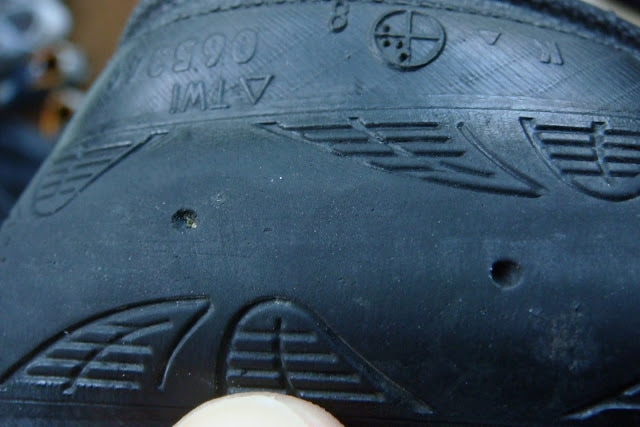
With used bikes, you’re probably going to get a pair of tires that needs to be replaced.
Geek Tip : Look out for any loss of tread, casing showing through, flat spots in the center of the rubber, or obvious bubbles or deformities like cracks or cuts.
With luck, you’ll end up with some tires with a good many miles left in them, but if they can stand to be replaced, you’ll be better off just getting a new pair.
Plus, your new, used frame will benefit enormously from some right new tires, helping your purchase last even longer.
Ask for A Test Ride
The most important part of deciding whether or not a second-hand bike is for you is the all-important test ride.
If the seller is honest, they won’t have any problems with you giving it a test run. If they do, keep looking. That’s either a bad sign or just not particularly good sellers’ etiquette.
First things first, if the bike is in no condition for a test ride, you’ll need to decide whether or not you’re willing to buy it as a fun project to restore it or if it’s just going to end up being a headache.
However, if it’s road-worthy, there are a few things you can investigate to see if it’s the right bike for you.
While you’re testing it out, try riding in different positions; on the drops, on the tops, off-saddle, for starters.
Try to get up an incline or two, see how it takes to hard pedaling, how it handles curves, and how well it turns and responds.
Geek Tip : Listen for any unusual noises and try to be mindful of what might be causing them, and pay attention to any odd feelings or vibrations.
You can also take this opportunity to check back over the other things you’ve been looking at, like how well the brakes respond, how smoothly the gears shift, the wheels’ reliability and straightness, and how stable the frame feels overall.
Summing Things Up
Armed with this list, any hopefully used bike buyer can rest easy knowing that they’ll have the most important things well in hand when seeking a trusty second-hand bike.
I’ve not only kept all of these in mind when buying my used bikes in the past, but I’ve also found myself wishing I had known more than a few of these pointers once or twice.
By keeping these key facts and some handy wisdom in your back pocket, you stand a great chance of finding a used bike that works well, keeps headaches and bills to a minimum, and gets you on the road comfortably and reliably for years to come.
Author Recommended Reads

